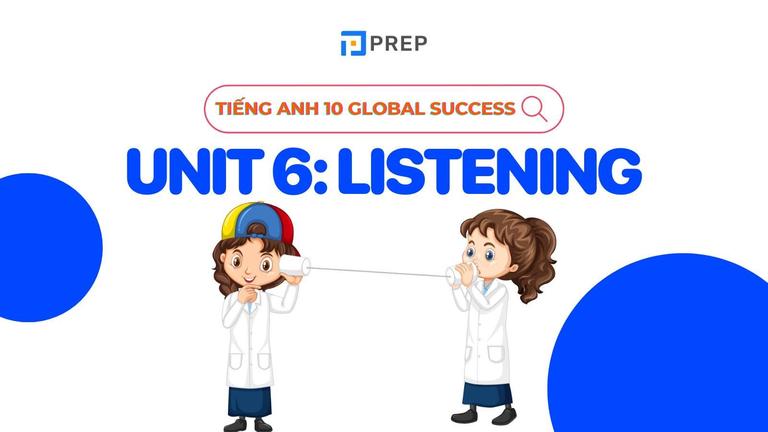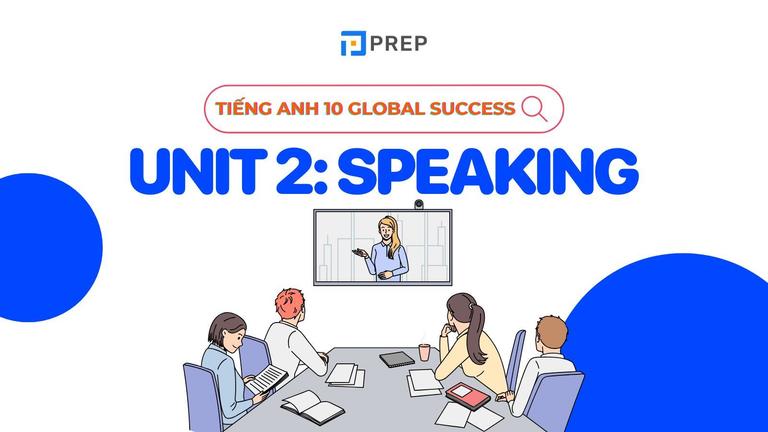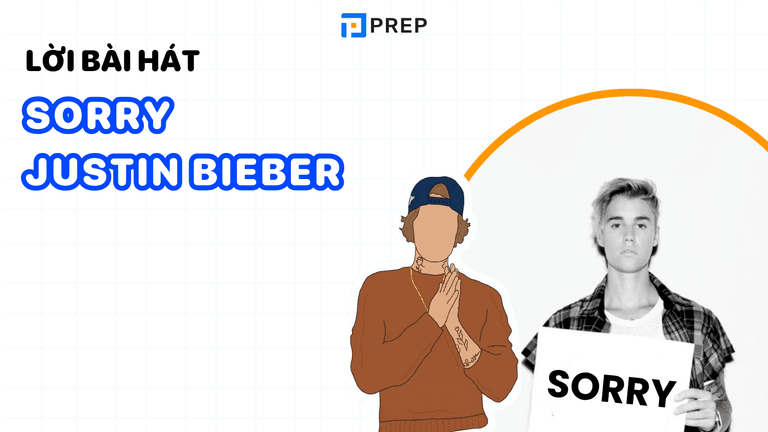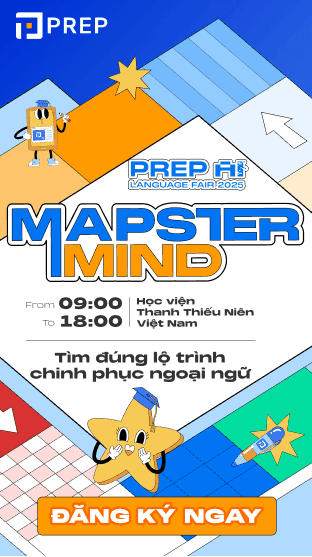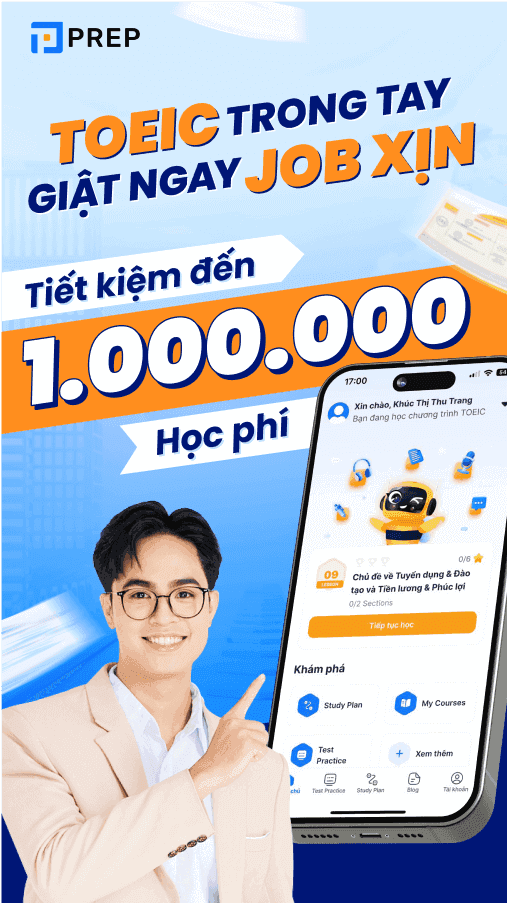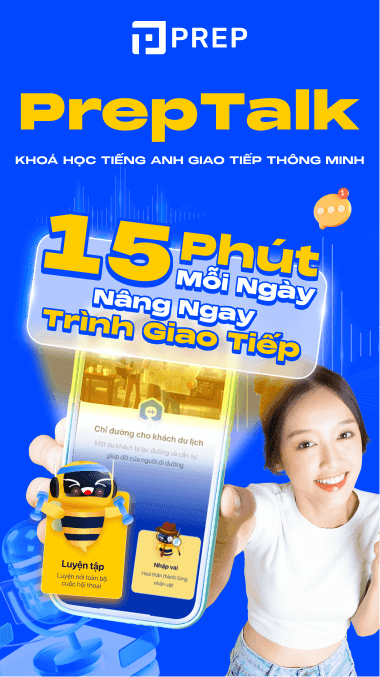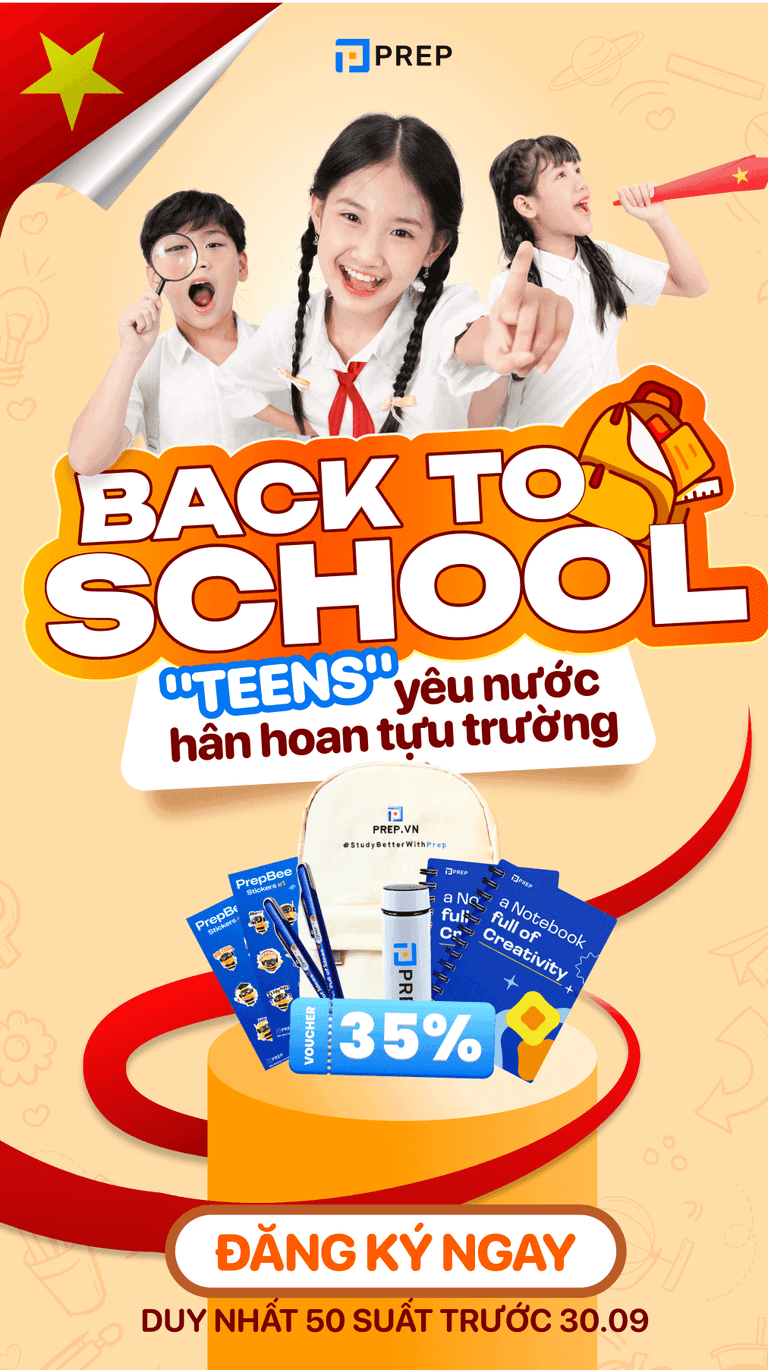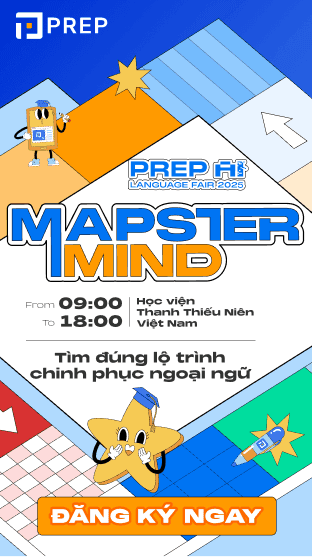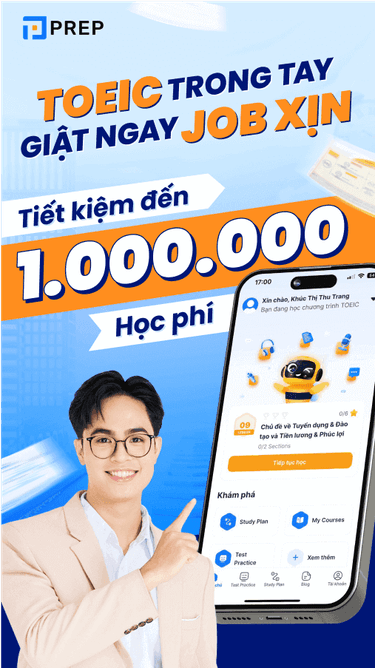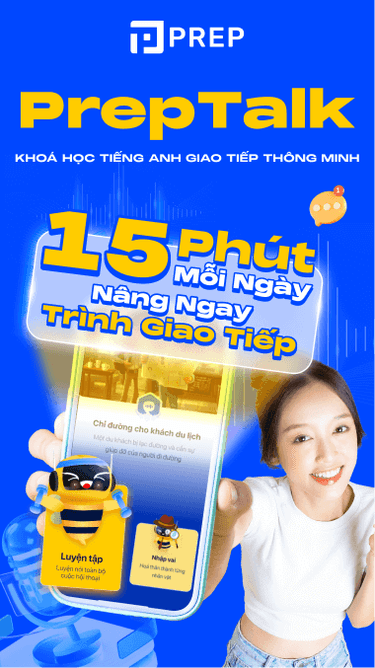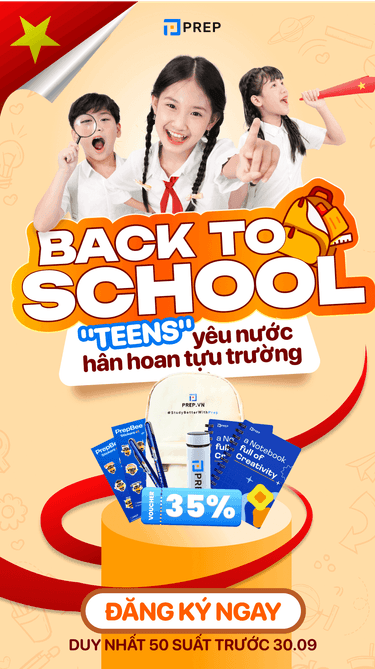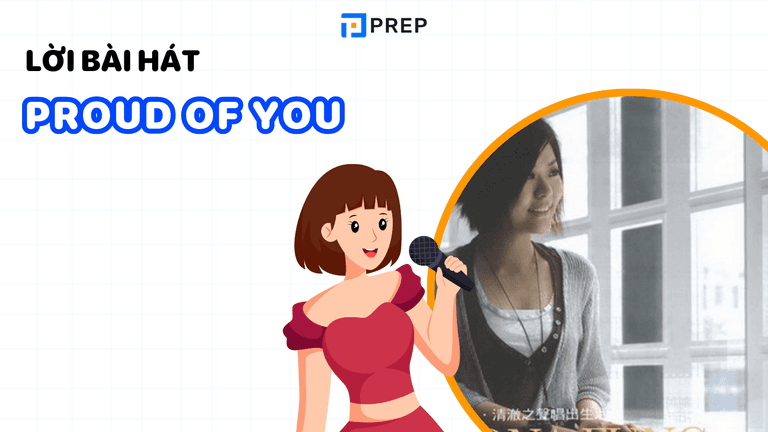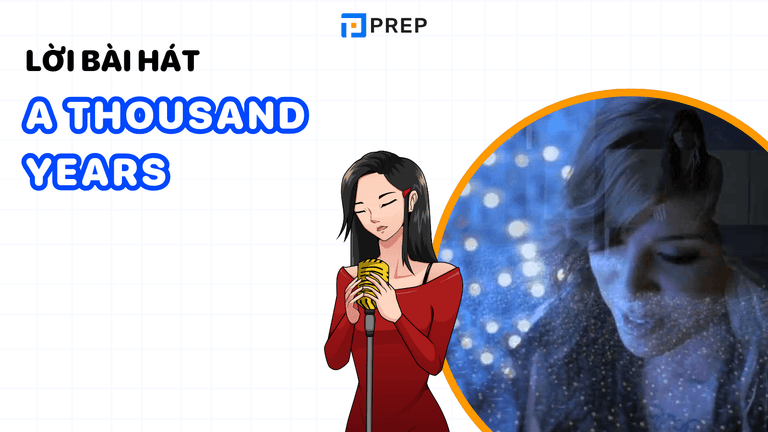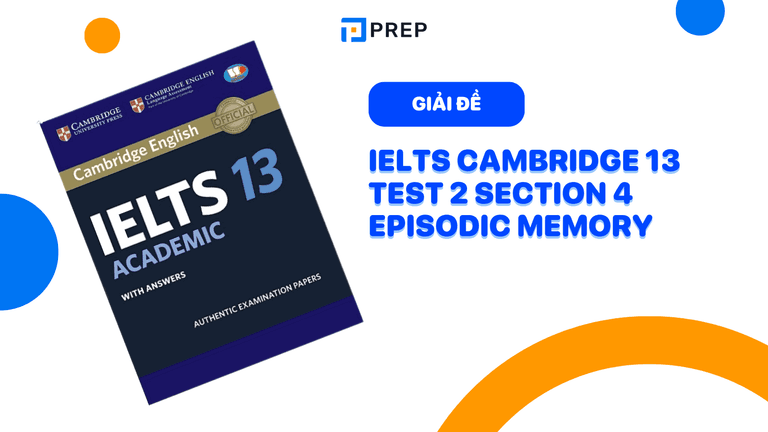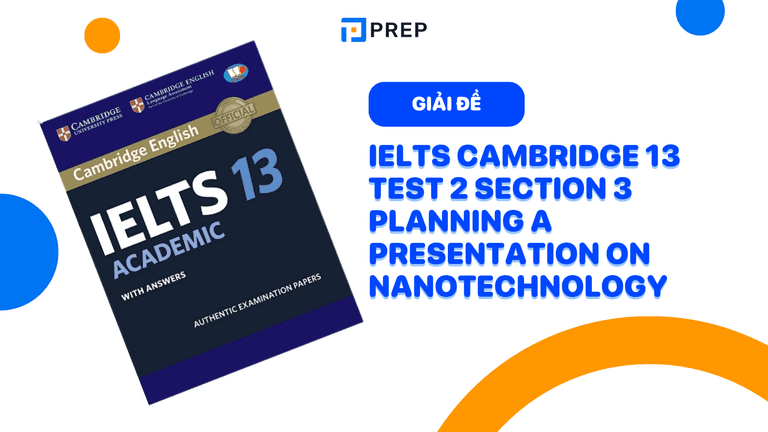Đề bài và đáp án chi tiết bài IELTS Cambridge 13 Test 2 Reading passage 3 Making the most of the trends
Bài đọc IELTS Cambridge 13 Test 2 Passage 3 Making the Most of the Trends là một bài đọc học thuật thú vị trong phần IELTS Reading Academic. Chủ đề của bài liên quan đến kinh doanh, tiếp thị và chiến lược thích ứng với xu hướng thị trường, một chủ đề thường gặp trong phần Passage 3, nơi yêu cầu thí sinh tư duy phân tích, tổng hợp và suy luận logic. Bài viết dưới đây tổng hợp đề bài, đáp án kèm giải thích chi tiết giúp bạn hiểu rõ hơn về cách giải quyết các câu hỏi trong bài.
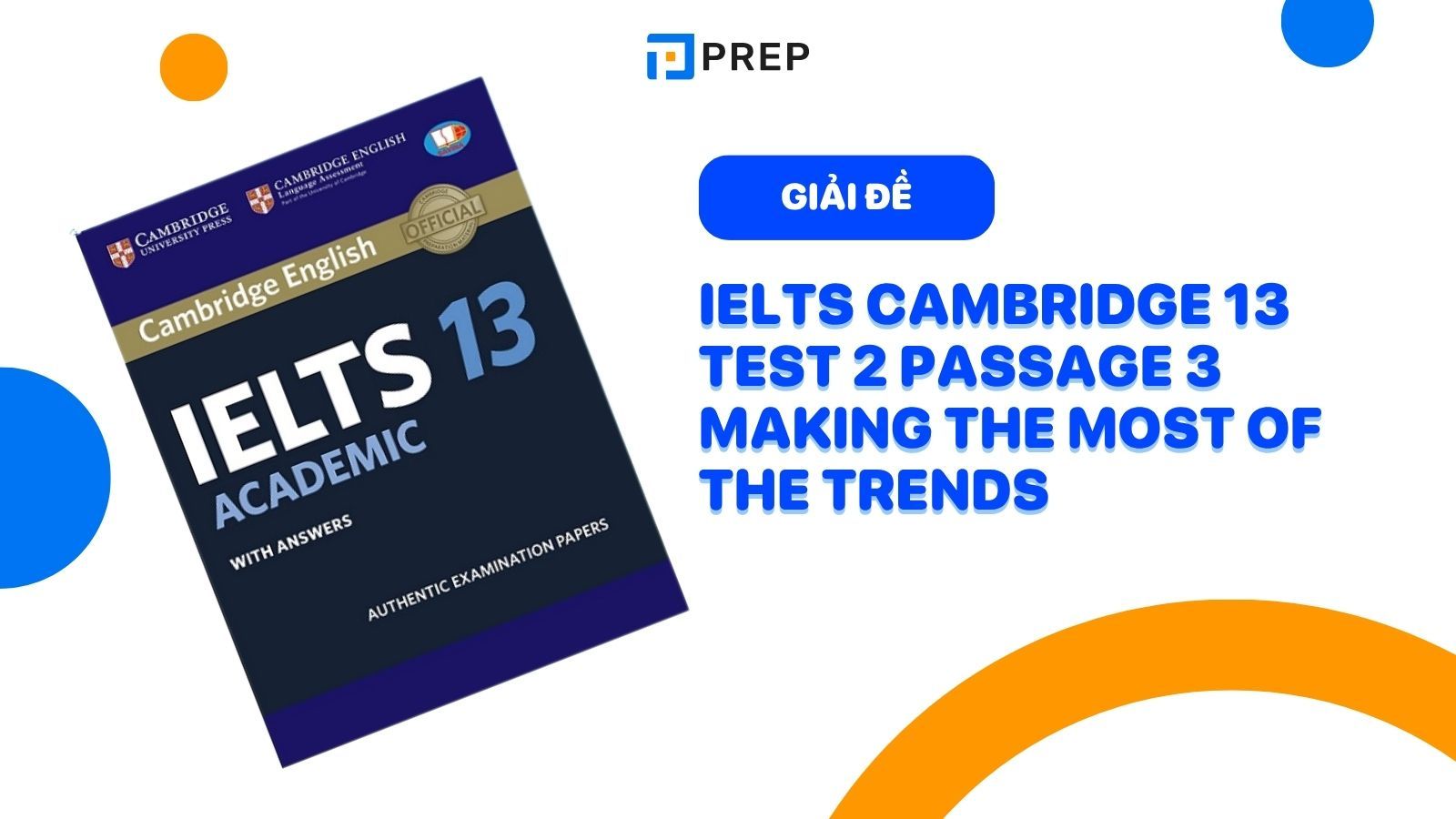
I. Đề bài IELTS Cambridge 13 Test 2 passage 3 Making the most of the trends
Reading Making the most of the trends
Experts from Harvard Business School give advice to managers
Most managers can identify the major trends of the day. But in the course of conducting research in a number of industries and working directly with companies, we have discovered that managers often fail to recognize the less obvious but profound ways these trends are influencing consumers’ aspirations, attitudes, and behaviors. This is especially true of trends that managers view as peripheral to their core markets.
Many ignore trends in their innovation strategies or adopt a wait-and-see approach and let competitors take the lead. At a minimum, such responses mean missed profit opportunities. At the extreme, they can jeopardize a company by ceding to rivals the opportunity to transform the industry. The purpose of this article is twofold: to spur managers to think more expansively about how trends could engender new value propositions in their core markets, and to provide some high-level advice on how to make market research and product development personnel more adept at analyzing and exploiting trends.
One strategy, known as ‘infuse and augment’, is to design a product or service that retains most of the attributes and functions of existing products in the category but adds others that address the needs and desires unleashed by a major trend. A case in point is the Poppy range of handbags, which the firm Coach created in response to the economic downturn of 2008. The Coach brand had been a symbol of opulence and luxury for nearly 70 years, and the most obvious reaction to the downturn would have been to lower prices. However, that would have risked cheapening the brand’s image. Instead, they initiated a consumer-research project which revealed that customers were eager to lift themselves and the country out of tough times. Using these insights, Coach launched the lower-priced Poppy handbags, which were in vibrant colors, and looked more youthful and playful than conventional Coach products. Creating the sub-brand allowed Coach to avert an across-the-board price cut. In contrast to the many companies that responded to the recession by cutting prices, Coach saw the new consumer mindset as an opportunity for innovation and renewal.
A further example of this strategy was supermarket Tesco’s response to consumers’ growing concerns about the environment. With that in mind, Tesco, one of the world’s top five retailers, introduced its Greener Living program, which demonstrates the company’s commitment to protecting the environment by involving consumers in ways that produce tangible results. For example, Tesco customers can accumulate points for such activities as reusing bags, recycling cans and printer cartridges, and buying home-insulation materials. Like points earned on regular purchases, these green points can be redeemed for cash. Tesco has not abandoned its traditional retail offerings but augmented its business with these innovations, thereby infusing its value proposition with a green streak.
A more radical strategy is ‘combine and transcend’. This entails combining aspects of the product’s existing value proposition with attributes addressing changes arising from a trend, to create a novel experience – one that may land the company in an entirely new market space. At first glance, spending resources to incorporate elements of a seemingly irrelevant trend into one’s core offerings sounds like it’s hardly worthwhile. But consider Nike’s move to integrate the digital revolution into its reputation for high-performance athletic footwear. In 2006, they teamed up with technology company Apple to launch Nike+, a digital sports kit comprising a sensor that attaches to the running shoe and a wireless receiver that connects to the user’s iPod. By combining Nike’s original value proposition for amateur athletes with one for digital consumers, the Nike+ sports kit and web interface moved the company from a focus on athletic apparel to a new plane of engagement with its customers.
A third approach, known as ‘counteract and reaffirm’, involves developing products or services that stress the values traditionally associated with the category in ways that allow consumers to oppose – or at least temporarily escape from – the aspects of trends they view as undesirable. A product that accomplished this is the ME2, a video game created by Canada’s iToys. By reaffirming the toy category’s association with physical play, the ME2 counteracted some of the widely perceived negative impacts of digital gaming devices. Like other handheld games, the device featured a host of exciting interactive games, a full-color LCD screen, and advanced 3D graphics. What set it apart was that it incorporated the traditional physical component of children’s play: it contained a pedometer, which tracked and awarded points for physical activity (walking, running, biking, skateboarding, climbing stairs). The child could use the points to enhance various virtual skills needed for the video game. The ME2, introduced in mid- 2008, catered to kids’ huge desire to play video games while countering the negatives, such as associations with lack of exercise and obesity.
Once you have gained perspective on how trend-related changes in consumer opinions and behaviors impact on your category, you can determine which of our three innovation strategies to pursue. When your category’s basic value proposition continues to be meaningful for consumers influenced by the trend, the infuse-and-augment strategy will allow you to reinvigorate the category. If analysis reveals an increasing disparity between your category and consumers’ new focus, your innovations need to transcend the category to integrate the two worlds. Finally, if aspects of the category clash with undesired outcomes of a trend, such as associations with unhealthy lifestyles, there is an opportunity to counteract those changes by reaffirming the core values of your category.
Trends – technological, economic, environmental, social, or political – that affect how people perceive the world around them and shape what they expect from products and services present firms with unique opportunities for growth.
Questions 27-31
Choose the correct letter, A, B, C or D.
Write the correct letter in boxes 27-31 on your answer sheet.
27 In the first paragraph, the writer says that most managers
A fail to spot the key consumer trends of the moment.
B make the mistake of focusing only on the principal consumer trends.
C misinterpret market research data relating to current consumer trends.
D are unaware of the significant impact that trends have on consumers' lives.
28 According to the third paragraph, Coach was anxious to
A follow what some of its competitors were doing.
B maintain its prices throughout its range.
C safeguard its reputation as a manufacturer of luxury goods.
D modify the entire look of its brand to suit the economic climate.
29 What point is made about Tesco's Greener Living programme?
A It did not require Tesco to modify its core business activities.
B It succeeded in attracting a more eco-conscious clientele.
C Its main aim was to raise consumers' awareness of environmental issues.
D It was not the first time that Tesco had implemented such an initiative.
30 What does the writer suggest about Nike's strategy?
A It was an extremely risky strategy at the time.
B It was a strategy that only a major company could afford to follow.
C It was the type of strategy that would not have been possible in the past.
D It was the kind of strategy which might appear to have few obvious benefits.
31 What was original about the ME2?
A It contained technology that had been developed for the sports industry.
B It appealed to young people who were keen to improve their physical fitness.
C It took advantage of a current trend for video games with colourful 3D graphics.
D It was a handheld game that addressed people's concerns about unhealthy lifestyles.
Questions 32-37
Look at the following statements (Questions 32-37) and the list of companies below.
Match each statement with the correct company, A, B, C or D.
Write the correct letter, A, B, C or D, in boxes 32-37 on your answer sheet.
NB You may use any letter more than once.
-
It turned the notion that its products could have harmful effects to its own advantage.
-
It extended its offering by collaborating with another manufacturer.
-
It implemented an incentive scheme to demonstrate its corporate social responsibility.
-
It discovered that customers had a positive attitude towards dealing with difficult circumstances.
-
It responded to a growing lifestyle trend in an unrelated product sector.
-
It successfully avoided having to charge its customers less for its core products.
List of companies
A Coach
B Tesco
C Nike
D iToys
Questions 38-40
Complete each sentence with the correct ending, A, B, C or D below.
Write the correct letter, A, B, C or D, in boxes 38-40 on your answer sheet.
-
If there are any trend-related changes impacting on your category, you should
-
If a current trend highlights a negative aspect of your category, you should
-
If the consumers' new focus has an increasing lack of connection with your offering, you should
List of endings
A employ a combination of strategies to maintain your consumer base.
B identify the most appropriate innovation strategy to use.
C emphasise your brand's traditional values with the counteract-and-affirm strategy.
D use the combine-and-transcend strategy to integrate the two worlds.
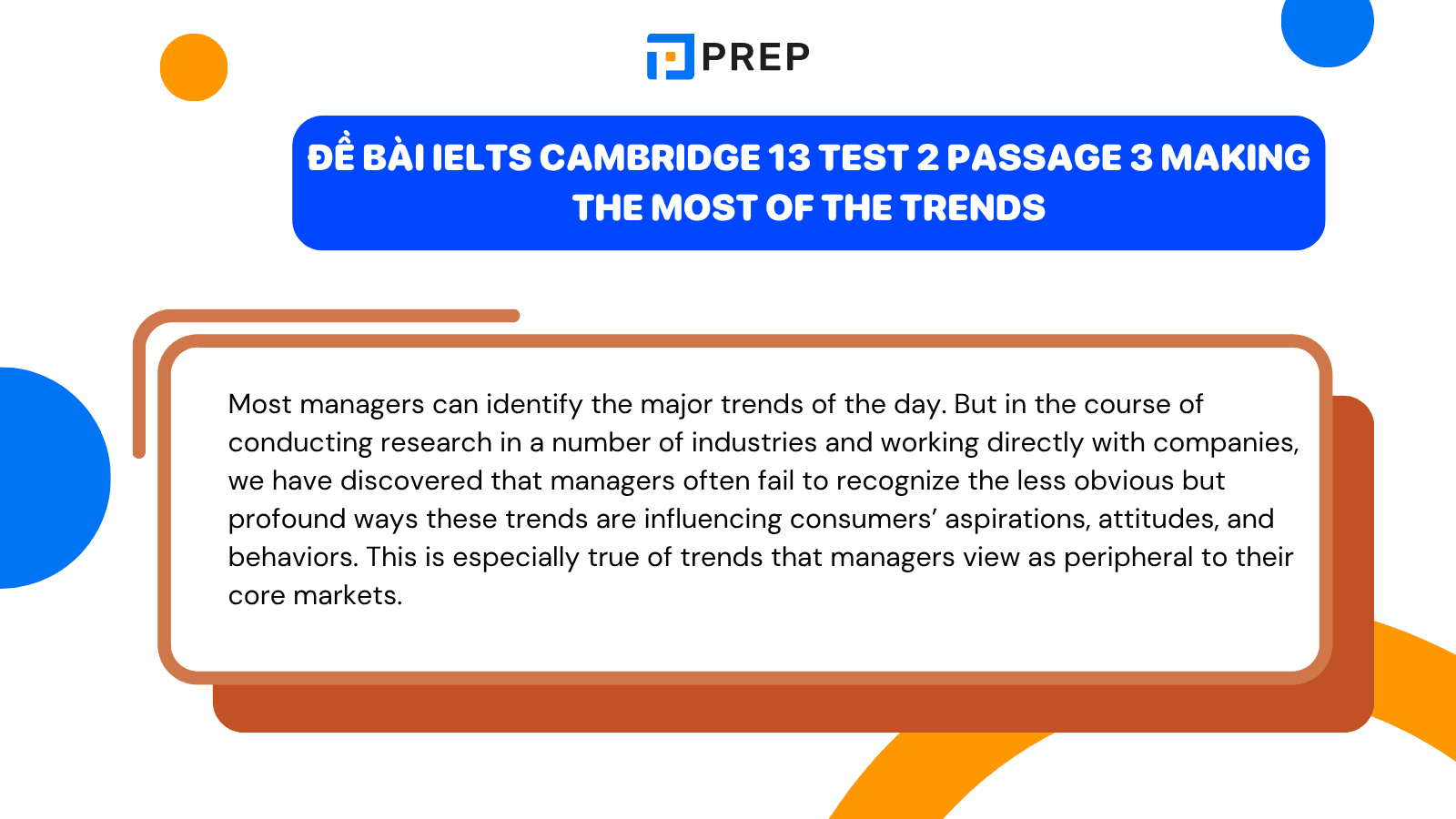
II. Đáp án IELTS Cambridge 13 Test 2 passage 3 Making the most of the trends
Tham khảo đáp án bài đọc Reading Passage 3, Questions 27-40:
|
Câu hỏi |
Đáp án |
|
27 |
D |
|
28 |
C |
|
29 |
A |
|
30 |
D |
|
31 |
D |
|
32 |
D |
|
33 |
C |
|
34 |
B |
|
35 |
A |
|
36 |
C |
|
37 |
A |
|
38 |
B |
|
39 |
C |
|
40 |
D |
III. Giải thích đáp án chi tiết
Tham khảo chi tiết đáp án để hiểu rõ cách làm từng câu trong bài đọc nhé!
|
Câu hỏi |
Đáp án |
Giải thích chi tiết |
|
27 |
D |
Đoạn đầu nói rằng nhiều nhà quản lý không nhận ra “những ảnh hưởng sâu sắc nhưng ít hiển nhiên” mà các xu hướng có thể có lên hành vi người tiêu dùng ⇒ Họ “are unaware of the significant impact that trends have on consumers’ lives.” |
|
28 |
C |
Coach lo ngại việc giảm giá sẽ làm “cheapening the brand’s image” – tức là làm mất đi hình ảnh sang trọng ⇒ Họ muốn bảo vệ danh tiếng thương hiệu cao cấp. |
|
29 |
A |
Tesco không thay đổi mô hình bán lẻ cốt lõi mà “augmented its business with these innovations”, tức là mở rộng thêm, không thay đổi nền tảng chính. |
|
30 |
D |
Chiến lược của Nike “seemed irrelevant at first glance” – thoạt nhìn có vẻ không đáng làm ⇒ cho thấy lợi ích của nó không rõ ràng ngay lập tức. |
|
31 |
D |
ME2 là trò chơi cầm tay “addressed concerns about lack of exercise and obesity” ⇒ nhấn mạnh lối sống lành mạnh trong khi vẫn là trò chơi điện tử. |
|
32 |
D |
iToys phát triển ME2 để “counteract” tác động tiêu cực của game – biến điều có hại thành lợi thế. |
|
33 |
C |
Nike hợp tác với Apple để tạo Nike+ ⇒ “extended its offering by collaborating with another manufacturer.” |
|
34 |
B |
Tesco khuyến khích khách hàng tái chế, tái sử dụng qua chương trình “Greener Living”, thể hiện trách nhiệm xã hội. |
|
35 |
A |
Coach phát hiện khách hàng “were eager to lift themselves out of tough times”, nghĩa là họ có thái độ tích cực với hoàn cảnh khó khăn. |
|
36 |
C |
Nike kết hợp công nghệ với thể thao – đáp ứng xu hướng sống kỹ thuật số trong lĩnh vực khác. |
|
37 |
A |
Coach tránh việc phải giảm giá toàn bộ sản phẩm nhờ ra mắt dòng Poppy – giữ nguyên giá trị cốt lõi mà vẫn thu hút khách hàng mới. |
|
38 |
B |
Nếu xu hướng ảnh hưởng đến ngành, công ty nên “determine which of the three innovation strategies to pursue” ⇒ chọn chiến lược phù hợp. |
|
39 |
C |
Nếu xu hướng nêu bật khía cạnh tiêu cực, cần “reaffirm the core values” ⇒ củng cố giá trị truyền thống. |
|
40 |
D |
Nếu xu hướng khiến sản phẩm trở nên xa rời người tiêu dùng, nên “integrate the two worlds”, tức là kết hợp lại. |
Xem thêm: Đề bài và đáp án chi tiết IELTS Cambridge 13 Test 2 Section 4 Episodic memory
IV. Từ vựng hay trong bài nên ghi nhớ
Lưu lại một số từ vựng hay trong bài dưới đây để mở rộng vốn từ của bạn nhé!
|
Từ vựng |
Nghĩa tiếng Việt |
Ví dụ |
|
value proposition |
đề xuất giá trị (giá trị cốt lõi mà sản phẩm mang lại cho khách hàng) |
The company’s new value proposition focuses on eco-friendly design. (Giá trị cốt lõi mới của công ty tập trung vào thiết kế thân thiện với môi trường.) |
|
infuse and augment |
chiến lược bổ sung và làm giàu thêm |
The brand used the infuse and augment strategy to add new features without changing its identity. (Thương hiệu sử dụng chiến lược “bổ sung và mở rộng” để thêm tính năng mới mà không thay đổi bản sắc.) |
|
combine and transcend |
kết hợp và vượt lên |
Nike combined sports and technology to transcend traditional boundaries. (Nike kết hợp thể thao và công nghệ để vượt qua giới hạn truyền thống.) |
|
counteract and reaffirm |
chống lại và khẳng định lại |
The company launched a new product to counteract negative trends and reaffirm its brand values. (Công ty tung sản phẩm mới để chống lại xu hướng tiêu cực và khẳng định lại giá trị thương hiệu.) |
|
opulence |
sự xa hoa, sang trọng |
The brand has long been associated with opulence and prestige. (Thương hiệu từ lâu đã gắn liền với sự xa hoa và uy tín.) |
|
corporate social responsibility (CSR) |
trách nhiệm xã hội doanh nghiệp |
Tesco promoted recycling to strengthen its CSR image. (Tesco thúc đẩy tái chế để củng cố hình ảnh trách nhiệm xã hội của mình.) |
|
recession |
suy thoái kinh tế |
Many companies cut prices during the recession. (Nhiều công ty giảm giá trong thời kỳ suy thoái kinh tế.) |
|
tangible results |
kết quả hữu hình, cụ thể |
The campaign aimed to produce tangible results for the environment. (Chiến dịch nhằm tạo ra kết quả cụ thể cho môi trường.) |
|
novel experience |
trải nghiệm mới mẻ |
Nike+ offered users a novel experience that blended sport and technology. (Nike+ mang lại trải nghiệm mới mẻ kết hợp giữa thể thao và công nghệ.) |
|
consumer mindset |
tư duy người tiêu dùng |
Understanding the consumer mindset helps firms adapt to market trends. (Hiểu tư duy người tiêu dùng giúp doanh nghiệp thích ứng với xu hướng thị trường.) |
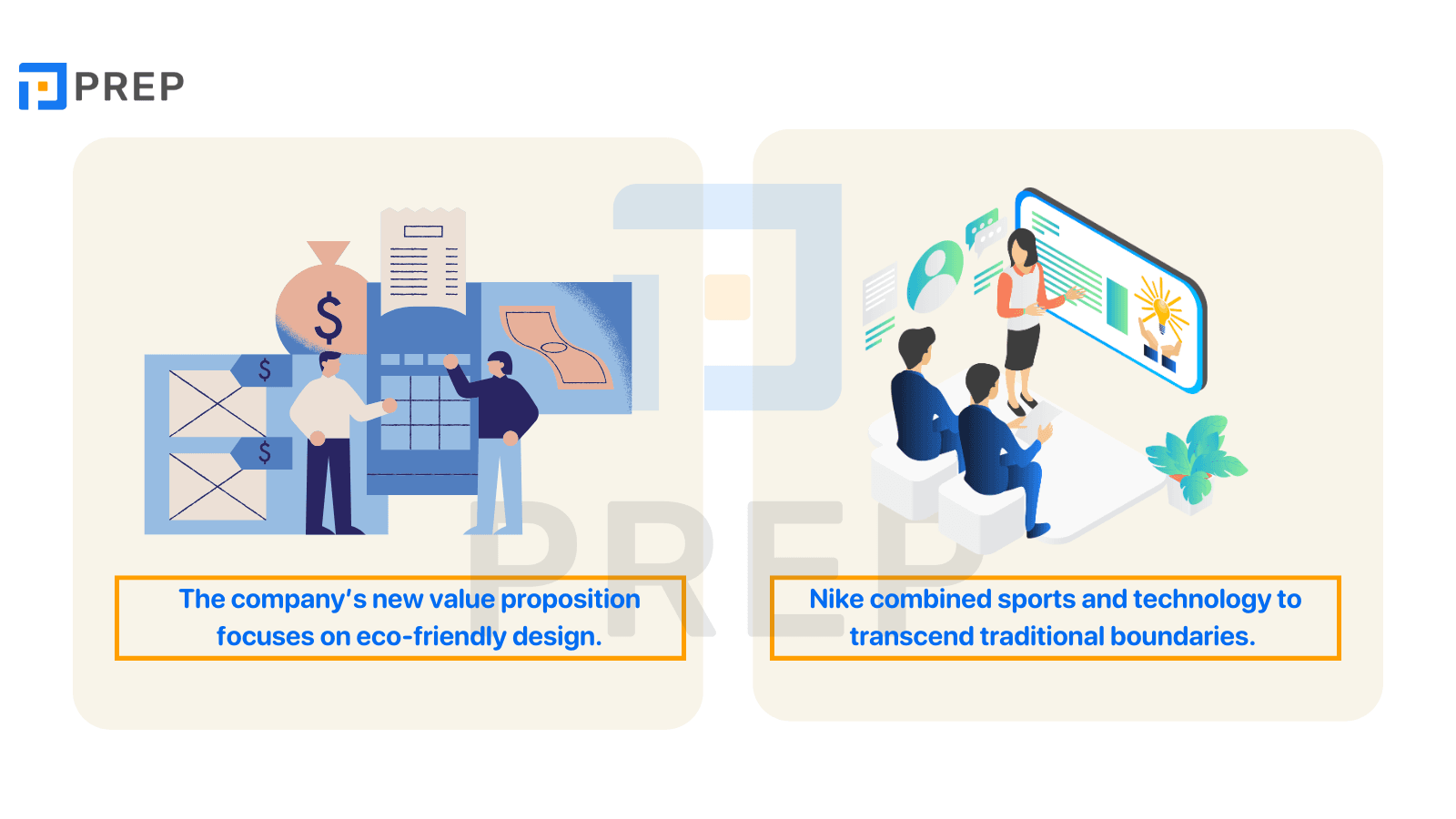
Trên đây là đề bài và đáp án chi tiết bài đọc IELTS Cambridge 13 Test 2 passage 3 Making the most of the trends. Hy vọng tài liệu trên sẽ hữu ích cho bạn trong quá trình luyện thi IELTS.
Học tiếng Anh online dễ dàng hơn với PREP - Nền tảng Học & Luyện thi thông minh cùng AI. Nhờ công nghệ AI độc quyền, bạn có thể tự học trực tuyến ngay tại nhà, chinh phục lộ trình học IELTS, TOEIC, tiếng Anh giao tiếp hiệu quả. Bên cạnh đó, học viên còn có sự hỗ trợ tuyệt vời từ Teacher Bee AI, trợ lý ảo giúp bạn giải đáp thắc mắc và đồng hành 1-1 trong suốt quá trình học tập. Hãy click TẠI ĐÂY hoặc liên hệ HOTLINE 0931428899 để nhận tư vấn chi tiết về các khóa học tiếng Anh chất lượng nhất thị trường!
Tải ngay app PREP để bắt đầu hành trình học tiếng Anh tại nhà với chương trình học luyện thi online chất lượng cao.
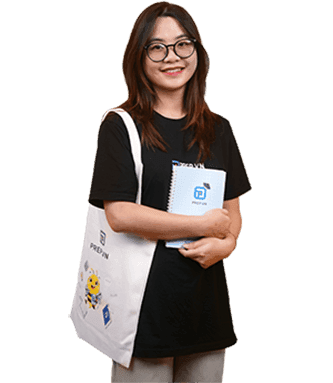
Chào bạn! Mình là Hiền Hoàng, hiện đang đảm nhận vai trò quản trị nội dung sản phẩm tại Blog của website prepedu.com.
Với hơn 5 năm tự học các ngoại ngữ như tiếng Anh, tiếng Trung và ôn luyện một số kỳ thi IELTS, TOEIC, HSK, mình đã tự đúc rút được nhiều kinh nghiệm để hỗ trợ hàng nghìn người đang gặp khó khăn trong việc học ngoại ngữ. Hy vọng rằng những chia sẻ phía trên sẽ giúp ích cho bạn trong quá trình tự ôn luyện thi hiệu quả tại nhà!
Bình luận
Nội dung premium
Xem tất cảLộ trình cá nhân hoá
Có thể bạn quan tâm
Kết nối với Prep

MSDN: 0109817671.
Địa chỉ liên hệ: Tòa nhà Vinaconex, 34 Láng Hạ, phường Láng, TP Hà Nội.
Địa chỉ kinh doanh: Lô 21 C2 Khu đô thị Nam Trung Yên, phường Yên Hòa, TP Hà Nội.
Trụ sở: Số nhà 20, ngách 234/35 đường Hoàng Quốc Việt, phường Nghĩa Đô, TP Hà Nội.
Phòng luyện ảo - Trải nghiệm thực tế - Công nghệ hàng đầu.
Hotline: 0931 42 8899.
Trụ sở: Số nhà 20, ngách 234/35 đường Hoàng Quốc Việt, phường Nghĩa Đô, TP Hà Nội.
Giấy chứng nhận hoạt động đào tạo, bồi dưỡng số 1309/QĐ-SGDĐT ngày 31 tháng 07 năm 2023 do Sở Giáo dục và Đào tạo Hà Nội cấp.
